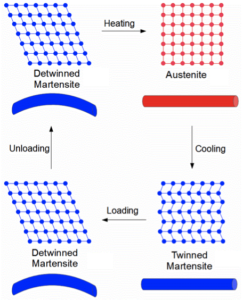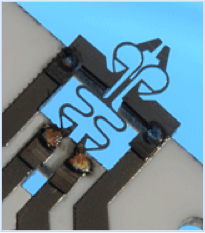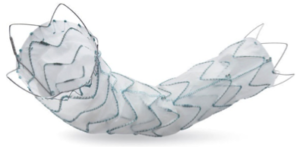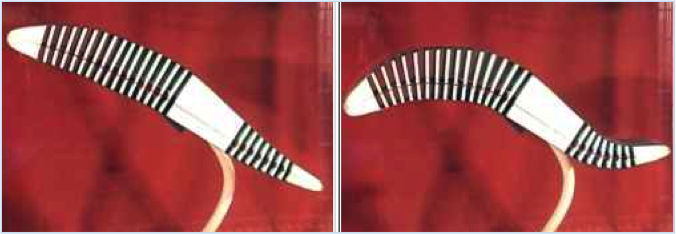- May 17, 2019
- Posted by: info
- Categories: Advanced Materials, Research
Shape memory alloys (SMAs) are smart materials showing two unique properties: superelasticity and shape-memory effect. Superelasticity allows SMAs to undergo large deformation upon loading at high temperatures (large strains can be undergone, until 8-10%) and to recover their original shape when unloaded (Figure 1). Shape memory effect is the ability to maintain a deformed shape up to heat induced recovery of the original shape (Figure 2).
 Figure 1. Superelasticity.
Figure 1. Superelasticity.
 Figure 3. Shape memory rotary actuator.
Figure 3. Shape memory rotary actuator. Figure 4. Shape memory microgripper.
Figure 4. Shape memory microgripper. Figure 5. Nitinol stent-graft
Figure 5. Nitinol stent-graft
Figure 6. Adaptive wing.
 Figure 7. Grab handle activated by SMA wires.
Figure 7. Grab handle activated by SMA wires.Documents
Main collaborations:
- Saes Getters, Dr. Marco Urbano
- CNRS Ecole Polytechnique Palaiseau France, Prof. A. Costantinescu
- Chemistry Dept./Section Physical Chemistry, University of Pavia, Prof. U. Anselmi Tamburini, Prof. G. Spinolo
References
-
- [P1] F. Auricchio, E. Boatti, M. Conti. SMA Biomedical Applications in “Shape Memory Alloy engineering: for Aerospace, Structural and Biomedical Applications”, editors: L. Lecce, A. Concilio, F. Auricchio. Elsevier, 307-341.
- [P2] F. Auricchio, E. Boatti, M. Conti. SMA Cardiovascular Applications and Computer-Based Design in “Shape Memory Alloy engineering: for Aerospace, Structural and Biomedical Applications”, editors: L. Lecce, A. Concilio, F. Auricchio. Elsevier, 343-367.

